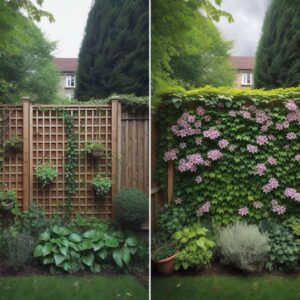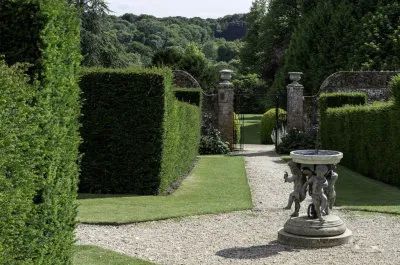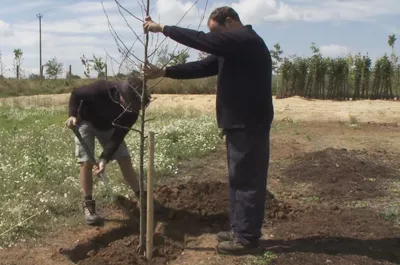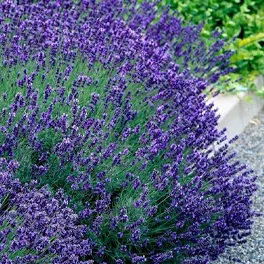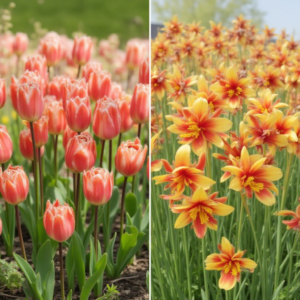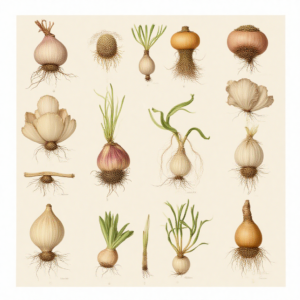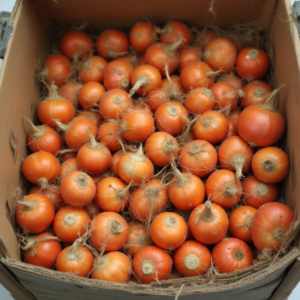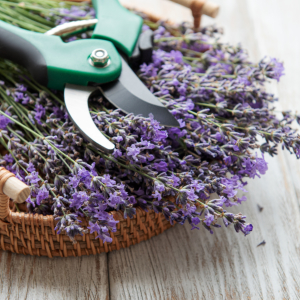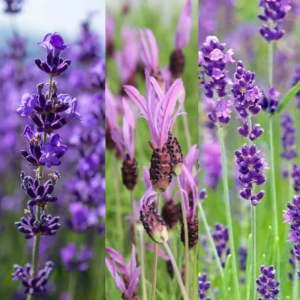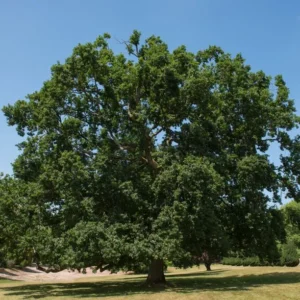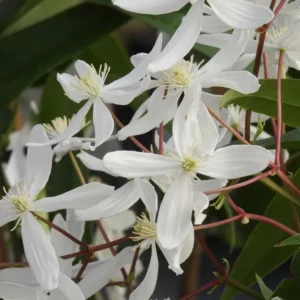After you plant a potted plant like Lavender out in your garden or a larger container, the top of the potting soil should not be visible. The rootball should be covered by a thin layer of the new soil, no more than 1 centimetre. That 1cm is not including mulch, which is mainly spread over… Continue reading The Key Last Step When Planting Potted Plants
Lavender 8:8:8 Watering Rule
Water your lavender plants, just don’t overdo it.
Who is a Which? Gardening Best Plant Supplier?
Let’s be realistic. It’s us, isn’t it?
Best Plants For Growing Over & Covering Fences
Climbing Plants Hide A Lot of Fence for a Small Footprint In many cosy gardens, the vertical surface area of fence is larger than the soil surface! Putting a hedge in front of a fence has the advantage of keeping the fence itself free for maintenance, and there is no risk of plants getting too… Continue reading Best Plants For Growing Over & Covering Fences
Ashridge Nurseries Service Reviews
Our customers review our service
Planting a Garden Hedge Like Beech, Yew, Laurel
How to Trench Plant a garden hedge like Privet, Beech, L:aurel, or Yew in well dug soil
How to Plant a Tree With a Stake
Planting with a stake is optional but highly recommended.
How to Grow Lavender
We start delivering Lavender plants each year when the weather warms up in April. How to Grow Lavender Don’t plant lavender out too early in Spring: the cold soil will shock the roots. In most years for most of the UK, wait until warm nights arrive in May, even June in the coldest Northern regions. … Continue reading How to Grow Lavender
Difference Between Spring and Summer Flower Bulbs
Flower bulbs are often discusses in two groups, Spring and Summer flowering, for convenience, regardless of the type of bulb / corm / rhizome. Spring bulbs are mainly planted in Autumn, and Summer bulbs during the growing season from mid-Spring. Spring-Blooming Bulbs: Summer-Blooming Bulbs:
Types of Bulb
Gardeners refer to several distinct plant structures as flower bulbs in everyday conversation. From a planting season perspective, bulbs / corms / tubers / rhizomes are handled one of 4 ways: For convenience, flower bulbs are commonly classified as Spring or Summer flowering.
How do I store garden bulbs before planting?
If you can’t plant your flower bulbs promptly after delivery, you will need to keep them somewhere suitable to prevent them from rotting or sprouting. This advice applies to any bulb when we deliver it to you, and there is a delay in planting. It is not advice about lifting and storing bulbs that are already growing… Continue reading How do I store garden bulbs before planting?
Ashridge: A Rural Nightmare Audiodrama
Tony Walker’s chilling series of supernatural stories is set in the probably fictional town of Ashridge, which we hope doesn’t exist just down the road from us in Castle Cary Ashridge: A Rural Nightmare is an eldritch horror series with an old school BBC synthwave West Country tunnel vibe. For the best frightening effect the… Continue reading Ashridge: A Rural Nightmare Audiodrama
Rose Hips
Rose bushes have edible flowers, from the petals to the fruit, called hips. Wild hedge roses best rose hips list:
Standard Tree Definition
A full standard tree, known as a standard, with the unfortunate industry abbreviation std, has a clear stem at least 1.8 tall before it branches. It is typically at least 2.5 metres tall, however, unlike younger trees listed in the Hedging & Saplings section, full standard trees are not graded by their height, but by their girth in centimetres at… Continue reading Standard Tree Definition
How to Plant Sweet Pea Plugs
Planting sweet pea plugs is easy, all you need is some nice rich soil, a sunny spot, something for them to grow up. Plant them a centimetre or two deep, so that the soil just covers the base of the stem, which will set root and give you a stronger, more stable plant. You will… Continue reading How to Plant Sweet Pea Plugs
Lavender Plants are Safe for Cats & Dogs
Confusion exists around lavender plants and pet safety: there is no risk at all from the plants in your garden or windowsill.
Herbaceous Perennial Planting Seasons
Autumn and Spring are both ideal for planting perennial plants, allowing for strong root development and healthy growth. Dates will be earlier in the South West, later in cold Northern & Scottish regions. Early Autumn (September-October) Spring to early Summer, (late April-June) Midsummer (July-August) Winter (November-March) Most perennials we grow are fully hardy and live outdoors year… Continue reading Herbaceous Perennial Planting Seasons
Perennial Plants: Flower Borders & Bedding
A perennial plant lives for three plus years. Trees and shrubs are woody perennials. But in everyday garden use, perennial refers to herbaceous (non-woody) perennial plants. These produce new, non-woody growth from ground level every Spring and die back in Winter; in some cases, attractive dead stalks are kept for late season interest. Evergreen herbaceous perennials… Continue reading Perennial Plants: Flower Borders & Bedding
Growing Dahlias
This guide is for Dahlias in open soil, read about growing Dahlias in pots instead. The golden rules of dahlia growing are to keep them free from frost, plant them in the sun with support (rings with open centres are better than supports with criss-cross grids), then feed them well, keep them free from pests and… Continue reading Growing Dahlias
What are the Dahlia Flower Shape classifications?
Dahlias are all grown basically the same way, but the flowers vary greatly in size and shape. Some are better than others for the border, for cutting, or for showing off your giant dinnerplate blooms that are so heavy they need staking to hold them up! Involute vs Revolute Petals Involute petals curl inwards, closing into… Continue reading What are the Dahlia Flower Shape classifications?
Do climbing plants damage walls?
Gutters, Pipes & Fittings are Always Vulnerable Most climbing plants can damage, block, or push guttering, drainpipes and other external fittings off the wall. Wisteria in particular is the drainpipe & gutter crusher! Twining tendrils generally won’t damage walls Unless their weight gets too much for their supports, these plants are safe for any wall Wisteria is a partial exception: with age, it… Continue reading Do climbing plants damage walls?
What are Shrubs?
A shrub is a woody, freestanding plant that naturally has multiple main stems. Through pruning, many shrubs can be grown as a tree form with a single main trunk, and vice versa, many trees can be pruned & trimmed into a shrubby form, which is how hedges are made. Rose bushes are natural shrubs that can be… Continue reading What are Shrubs?
Rounton Coffee Plants North York Moors Orchard
Yorkshire Coffee Roasters Support Local Heritage Orchard
Nik Mitchell’s Problem With Pollarding
Following on from David Cracknell’s observation that “Britain’s love of trees is real, but it needs to grow up”, we have the story of Nik Mitchell’s response to the routine pollarding of some local poplar trees near Sandwich in Kent. Yes, that is a harsh cut to make in Spring, early Winter is best for… Continue reading Nik Mitchell’s Problem With Pollarding
Harvesting Lavender Flowers
All the lavender plants we sell have flowers suitable for drying or oil extraction, great for aromatherapy, chandlery and baking. When should I harvest Lavender for its oil? Lavender flowers contain the most oil immediately after their full bloom, when the very first florets begin to wither, but most are still looking lovely. Which Lavender… Continue reading Harvesting Lavender Flowers
Differences between English, Dutch, and French Butterfly Lavenders
Differences & Similarities The groups of Lavender plants commonly grown in UK gardens are English Lavender, Dutch Lavandin, and French “Butterfly” Lavender. They all: Lavandula angustifolia: Common or English Lavender Lavandula x intermedia: Dutch Lavender or Lavandin Lavandula stoechas & L. pedunculata: French / Spanish “Butterfly Ears” Lavender Which Lavender is Best as a Herb for Kitchen Use? All lavender is edible, but only… Continue reading Differences between English, Dutch, and French Butterfly Lavenders
David Cracknell Starts British Woodland Substack
David Cracknell, renowned piano player and former Sunday Times political editor, has started a substack, Stump Speech @djcracknell, kicking off with a piece musing on the mostly felled Toby Carvery Oak, a 500+ year old Common Oak in North London, and the implications of people’s reactions. His debut post rightly points out the difference between… Continue reading David Cracknell Starts British Woodland Substack
Is Lavender Native to the UK?
No, Lavender is not native to the UK, it’s a Mediterranean plant. The Romans introduced lavenders to Britain over 1,500 years ago, using the flowers to scent and wash themselves; the word itself is from the Latin lavare, to wash. Their legionaries carried dried lavender to pack into bandages for its antibacterial properties, and it… Continue reading Is Lavender Native to the UK?
How Deep Do I Plant a Clematis?
Most people plant their Clematis vines a little deep, the British Clematis Society says: “Ensure that the surface of the root ball is at least 3″ / 7.5cm below the level of the surrounding soil.” In our clematis growing guide, we add that even up to 6″ / 15cm below soil level is good for… Continue reading How Deep Do I Plant a Clematis?
Backseat Driving Thatcher’s Cider Biodiversity
I saw this article in HortWeek: Thatchers Cider plants 13,000 apple trees in new Somerset orchard. I made a mental wager to myself before reading it: I bet they exaggerate the environmental benefit side of the orchard. Not because of anything about Thatchers Cider. It’s because I think it’s nigh impossible to write a press… Continue reading Backseat Driving Thatcher’s Cider Biodiversity
How Big is a P9 Pot & What No One Tells You!
A P9 pot is 9cm wide at the top, containing about half a litre of soil It would be clearer if P9s were called “half litre pots”, but the industry standard is to measure pots under 1 litre by their width in centimetres, rather than their volume in litres. P9 is the smallest pot size… Continue reading How Big is a P9 Pot & What No One Tells You!
Monty Don Gives the Green Light for Aerating Lawns
This episode of totally healthy and appropriate fawning over Monty Don is brought to you by the phrase “Monty Don shares”. Disappointed as we were to discover that Monty is not called Mo’ Dough, nor Monty Donty, or even just George at home, and underwhelming as the “news” that hazel trees live for over 34… Continue reading Monty Don Gives the Green Light for Aerating Lawns
Why We Don’t Sell Isaac Newton’s Apple Tree
It’s not a very good apple. Simple as that. Several years ago, we sold “Isaac Newton’s apple tree”, which is already a part-fib. Flower of Kent is a good example of why many grand old heritage varieties are no longer grown. They were the best available in their day, but now they are outclassed in… Continue reading Why We Don’t Sell Isaac Newton’s Apple Tree
3 Steps to Set Up an Amazon grade Polytunnel like a Pro
Polytunnels are amazing if they are yours, somewhat unattractive if they are your neighbour’s (a hedge in between might help), and most gardens have space for a wee one. But if you get a regular old polytunnel from Amazon and set it up like the vanilla instructions say, then I am here to tell you… Continue reading 3 Steps to Set Up an Amazon grade Polytunnel like a Pro




